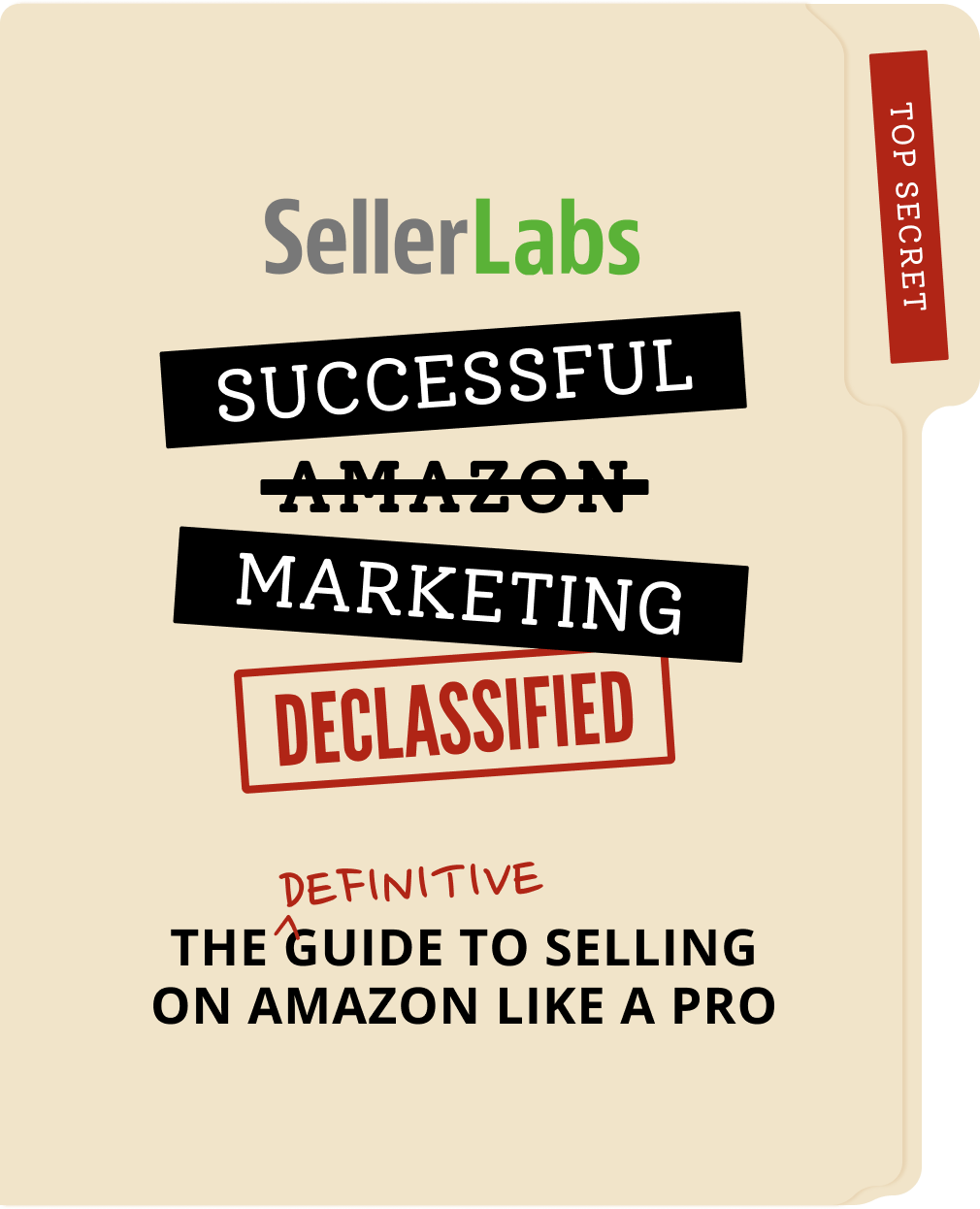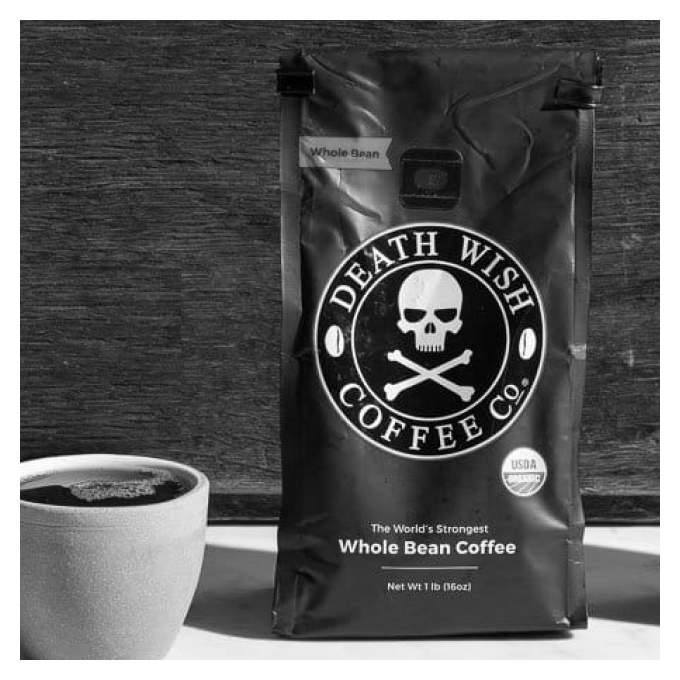
Welcome to
Seller Labs HQ
Hello, agent.
Thanks for accepting your mission. Now it’s time to use Seller Labs PRO to grow your Amazon sales.
Sometimes marketing on Amazon can feel like Mission: Impossible. No matter what you do, you fail to make a real impact on sales.
No more. Our goal is to declassify the Amazon marketing playbook and set you up for success by making an Amazon strategy your new Mission: Possible. By using tools like ranking optimization, advertising, and Buyer-Seller Messaging, we reveal the secrets to a prosperous Amazon business strategy.
The 7 Pillars of an Amazon Marketing Strategy
Here are the secrets to success that others don’t want you to know.
How to Build a Marketing Strategy
Ranking on Amazon:
Getting Your Products SeenAdvertising on Amazon:
Driving More SalesMessaging Customers: How to
Get More Reviews & FeedbackBeating Black Hat Marketing Tricks
Advanced Tactics: Intelligence for Next-Level Ops
The Future of Amazon Marketing Domination
How to Build an Amazon Marketing Strategy
The “Hope Strategy” – How to Bust Your Bad Habits and Make Data-Driven Decisions
Many business owners have a marketing goal that they want to hit, but many lack the foundational strategy of how they’re planning to get there.
Here’s what we recommend: use reporting and your current business health to help you define your sales goals and build an actionable strategy to achieve them.
Data is really trendy — everyone is talking about how to get access to it and optimize it. But at the same time, data doesn’t mean anything unless it’s actionable. When it comes to your Amazon data, you should be able to say “yes” to the following questions:
- Are you capturing your data?
- Do you know what to do with your data?
- Can you make decisions with your data that will positively impact your company?
- Are you able to establish a marketing strategy with what you know?

Get out your notebook. Write down your business goals.
And I’m being serious.
This is the foundation. Your answer should be a specific number. Write down how you’re going to achieve this goal. It could be a sentence, it could be one word. But now take a second and tell me, are you red, yellow, or green on that goal?”
If you’re not able to answer these questions, you’ve got what we like to call a “hope strategy.” It’s got all the right pieces, but none of the action items that you need to move the needle.
So how do you make money moves? By not only capturing your data, but taking advantage of what you learn. Ideally, you’ll use a tool designed to take action on your findings and define your next move. Let’s dive into a customer who used a killer marketing strategy, advertising, ranking, and more to grow their business in an impactful way.

THE COMPANY: Death Wish Coffee
In 2016, Death Wish Coffee was in a Super Bowl ad as part of Intuit’s “Small Business Competition” 30-second spot. The first ten minutes after the ad aired, they saw a 120,000 increase in their site visits. But before that, they became the biggest coffee seller on Amazon after partnering with Seller Labs PRO to build their successful marketing strategy. So while many people today see them as who they are — #1 on the world’s biggest marketplace — they started just like you on their journey to dominate Amazon.
THE TACTICS: Seller Labs PRO for Ranking Optimization, Advertising, & Buyer-Seller Messaging
A quadruple package of Seller Labs PRO provides Death Wish Coffee with everything they need: The Advertising Center, the Communication Center, the Keyword Center, and the Performance & Notification Center. With each of these tools, Death Wish moved the needle by analyzing Amazon reviews, building optimized product listings, and ultimately reaching daily, weekly, and monthly goals for their promotions and messaging.
THE GOAL: Maintain Amazon as a major sales-generating platform.
For Death Wish Coffee, navigating Amazon’s ever-changing requirements was about maintaining the experience and brand of their in-house coffee shop once their bags of coffee hit the shelves. With Seller Labs PRO, they wanted unique insights to make sure they did both from the word “go.”
THE RESULTS: Amazon makes up 40.5% of Death Wish Coffee’s total sales.
Even with high competition from established coffee sellers like Starbucks and Caribou Coffee, Death Wish Coffee was able to carve out a place for their product by consistently providing for their customers and keeping up with the changing Amazon demands.
So what did Death Wish Coffee know that you don’t? In addition to working with a tool like Seller Labs Pro, they learned the ins and outs defined in PRO step-by-step guide below.
Ranking on Amazon
The Inside Track on How to Get Your Products Seen
Optimizing your product listings, understanding the A9 Amazon algorithm, and learning how to track keywords is the secret to ranking success — but it doesn’t have to be an undercover operation.
So, the Amazon search algorithm. It’s the first thing that you need to understand to make the most of your ranking strategy, and here it goes:

To rank well, you want to work your way up. You start with the things you know you can do and balance them against the level of opportunity involved. That’s what you have to do.”
Search Terms + Detailed Page Views + Price + Sales + Reviews
The real algorithm is — as always — more complicated than that. Still, the basics that you need to focus on fall into those five categories. The best way to make a serious dent in your marketing goals is to focus on optimizing for as many of those categories as possible. With the right keywords, you can build high-performing product detail pages, which jumpstart your organic rankings.
Keep in mind: There are many “gurus” out there who claim they know how to crack the algorithm. You don’t need to worry about them: The key is to focus on the part of SEO you can control.
For example, if a guru talks how the location of your inventory is important for local search, but as a seller, all you can do is ship inventory into Amazon, that’s out of your control. Our advice? Focus on the parts you can control, and place your efforts in the activities that will make you money.
So what’s your first step to search engine optimization? Understanding what it is.

To rank well, you want to work your way up. You start with the things you know you can do and balance them against the level of opportunity involved. That’s what you have to do.”
SEO Is About Discovery
…and finding the solutions, information, resources, and products that best match the search terms a shopper entered. When it comes to A9, product matching is both an art and science. You, the seller, have to put together information to satisfy both the algorithm and the buyer.
If that sounds tough, don’t worry. Let us decode it and make it easier for you. Here are the top four things you need to remember to give your Amazon products a good SEO treatment.
Optimize your product listing titles.
Your product’s title is the first thing that a shopper sees on Amazon. It’s also the first place that the Amazon algorithm scans for keywords that indicate a match for the user’s query. You’ll need to nail the title by using consistency, clarity, and concision.
Try regularly following this order when writing product titles for Amazon listings: Brand + Model + Product Type + subsequent information such as material, purpose, size, quantity, color, etc.
Focus on your bullet points.
Bullet points are almost always indexed by the Amazon algorithm.Within an Amazon product listing, you have 1,000 characters to use over all five bullet points.
Bullets look better and read better when they are concise, punchy, and balanced. Keep each bullet to under 200 characters and always put your most-important bullet at the top. Remember that bullets don’t have to be complete sentences and that leading with numbers draws in the eye.
200 CHARACTERS MAX!
Some categories may allow you to write more, but we recommend you stick with the best practices: Bullet points should be within 150 and 200 characters.
Enhance your Amazon ranking strategy by using a keyword discovery tool.
Amazon sellers tend to believe that once they find and set keywords, they’re done. That’s absolutely wrong. Optimizing for Amazon SEO is about routinely and methodically adding new high-performing keywords (and removing low performers).
This means that you need to:
- Know where to find high-value keywords.
- Use a data-driven keyword discovery tool like Seller Labs PRO.
- Monitor keyword performance and swap out winners for losers.
Be a Spy!
With a keyword tool like Seller Labs PRO, you can look up your competitors’ products and see what keywords they are ranking for. Give it a try, you might find a few terms you hadn’t considered yet.
Always write for your buyers.
As we’ve said, an Amazon SEO strategy is about appealing to human shoppers and the Amazon algorithm. This can feel like a tough balancing act. SEO can and likely will feel overwhelming at times. But keep this in mind: AI algorithms matter, but at the end of the day, people, not computers, decide what to buy.
So, if you’re ever tempted to try to increase product discoverability by prioritizing the algorithm, focus on what really moves the sales needle: great products, great prices, and great customer service.
Try Seller Labs PRO Free for 30 Days.
GET A 30-DAY FREE TRIALAdvertising on Amazon
Driving More Sales with Secret Maneuvers
Every day Amazon advertising becomes more complex. The reality is, without a strong foundation in advertising mechanics, you’ll never be able to understand the newest and latest ad trends.
You’re probably aware of the following three advertising tools: Amazon Sponsored Ads, Sponsored Brand Ads, and Sponsored Displayed Ads, but do you know how to utilize these tools to help you achieve your goals with a concrete Amazon advertising strategy?
Whether your ad goal is to lower ACoS, increase velocity, or boost your organic ratings, your PPC ads will never be successful if you don’t know what you’re trying to do. While it’s good to have an overall goal, great sellers set specific advertising goals at an ASIN or Family level.

Amazon advertising is a moving train. You have to really know that the train is already at speed and whether you’re coming at it new or you’re far advanced, you have to keep velocity with the movement of the train.”
What else do you need?
Try these three Amazon PPC essentials to blow the cover on how to run successful, cost-effective advertising campaigns.
Own your branded keywords (or your competitors will).
Branded keywords are the keywords that contain your brand’s name. Shoppers who search using branded keywords are more likely to be familiar with your brand and they’re seeking out your products instead of a competitor’s based upon their past experiences or your brand’s reputation.
The good news: Branded keywords are up to four times more likely to convert than their generic counterparts.
The bad news: Amazon Brand Registry can help you protect your trademark, but it can’t stop other owners from bidding on your brand name.
Is this fair?
No, but that’s how Amazon advertising works.
To avoid this scenario, Amazon gives brand owners an undisclosed discount on their own branded keywords so you can deter competitors from making sales off of your branded keywords by charging your competition more per click.
- COVERT MANEUVER: If your competitors are not protecting their brand, you can develop a campaign to conquer their space!
Stretch your daily budget to work harder and longer.
One of the variables that you set in your Amazon ad campaigns is daily spend. If you run out of ad spend early in the day, you’re losing potential sales. Avoid this by examining your daily spend so that you can see which keywords are bringing clicks and which keywords are actually converting.
When you’re working on your Amazon ad strategy, always keep in mind that:
- Impressions are free, but they’re just the first step of the buying process.
- Clicks cost you money (what you’ve successfully bid to win the keyword) and you take a loss when they don’t convert.
- Conversions bring you revenue, boost ranking, and lower your CPC (cost per click), and ACoS (Advertising Cost of Sales). Focus on conversions.
Use CounterIntelligence
A bit of counterintelligence to keep in mind: You want to attribute your ad spend to total sales, if you aren’t already. When you start scaling up your PPC campaigns— we’re talking true volume growth — it can take up to 90 days to see movement.
So when you’re optimizing your campaigns, work in quarters. Have a Q1, Q2, Q3, and Q4 goal.
Just don’t try to optimize for less than a 90-day window.
You can learn more about timelines and advertising strategies here.
Use negative keywords.
Think of negative keywords as anti-keywords.
If a keyword is a term that will get your product discovered because shoppers are searching using that term, then a negative keyword is a term that will block your ad from appearing as a keyword match. Setting a negative keyword is your way of saying to Amazon: Do not show my sponsored ad when a shopper inputs [x] as a search term. This will reduce the number of impressions and clicks that do not lead to conversions.
As for knowing which keywords to make negative, rely on your data collection and look for keywords that get lots of impressions and/or clicks but few or no conversions. This will help lower your ACoS.
We can help you identify and suggest keywords to take searching for negative keywords off your hands. Learn more about it here.
Becoming an expert advertiser takes time, patience, and testing. If you’re interested in putting the power of Amazon advertising in your hands, SIGN UP FOR A FREE 30-DAY TRIAL OF SELLER LABS PRO, and get started building your unique strategy today.
Messaging Customers
How to Get More Reviews & Feedback While Staying Compliant with Amazon
Any time Amazon updates their messaging guidelines, sellers get confused. With the most recent policy change, there are a lot of updates needed, and they went into effect on November 3, 2020. Here’s what you need to know.
You can use tools like Seller Labs PRO to ensure your messaging is within the guidelines. But that’s not all. Even with a tool like Seller Labs PRO, you are still responsible for ensuring the messages that you send are compliant. We’ll set you up for success with the A/B testing, notifications, and more, but you still need to be smart about what you put in writing.
Here’s a basic run-down of what’s allowed and not allowed when it comes to messaging your clients on Amazon.
Basic Rules for Requesting
Amazon Seller Feedback & Product Reviews
DO:
SEPTEMBER 2020 UPDATE:
You CAN ask for reviews and feedback and you CAN use a third-party service like Seller Labs PRO to manage your customer messaging.
Send one communication, either ask for seller feedback or a product review, not both.
Adhere to Amazon’s Communications Guidelines.
Use neutral, respectful language.
Personalize the message in compliance with Amazon guidelines.
Stay updated on Amazon’s terms of compliance and regularly audit your messaging.
Err on the side of caution, and leave it out if you feel the language is “leading.”
Automate your messages.
Remember that as an Amazon seller, you’ve agreed to play by their rules.
Work with a tool like Seller Labs PRO, to optimize your messaging.
DO NOT:
SEPTEMBER 2020 UPDATE:
For correct formatting, you may not use emojis, gifs, or large images in your customer messaging.
Send multiple requests.
Use conditional language like; “If you love the product, leave five stars. If you’re not happy, contact us.”
Ask buyers to change existing reviews.
Try to persuade, incentivize, or bully buyers into leaving or changing reviews.
Offer incentives, such as promotions and coupons for a positive review.
Include links with external contact information, including email addresses.
Contact buyers directly.
Contact buyers who have opted out of feedback or review emails.
Solicit reviews from paid sources, friends, family, etc.
Next up, it’s time to make sure you understand the key differences between Buyer-Seller Messaging and Request a Review.
Here’s our breakdown:
Buyer-Seller Messaging
Available only to sellers who are NOT restricted from Buyer-Seller Messaging
Available in Seller Central, with limited features and no automation
Available within Seller Lab PRO’s Communication Center, with automations, event triggers, analytics, and A/B testing
Multiple pre-configured templates
Risks 30-day (or permanent) restriction as a result of violating Amazon’s Communications Guidelines
Customizable text, with a look and feel that reflects your brand
Request A Review
Available to ALL sellers, even those restricted from Buyer-Seller Messaging
Available in Seller Central, with no options or automation
Available within Seller Labs PRO’s Communication Center, with automations and your choice of send times
Single fixed message that cannot be customized
Sent by Amazon, with no templates
No risk of restriction because message contains no variables and is built and sent by Amazon
Black box (you cannot see, control, or receive reports on this messaging)
Now that you know the fundamentals, it’s time for the tough question: How do I get more product reviews while avoiding restriction?
The answer is simple: Don’t break the rules. There really isn’t a secret formula to get around it. But still, when Amazon sellers get restricted from Buyer-Selling Messaging for 30 days, they are surprised. Why?
Because they thought messaging was a “set it and forget it” part of their business and they didn’t do an audit to understand the messages they send and how the updated rules need to be applied.
So here’s our tip: Work with an Amazon-compliant tool like Seller Labs PRO to deliver rich communication with automated emails, event triggers, A/B testing, and more, to increase your feedback and reviews without breaking any of Amazon’s guidelines. And that’s the biggest plus: By working with Seller Labs PRO, you can ensure that every Buyer-Seller Message you send is not only branded for your company, but compliant.
Try Seller Labs PRO Free for 30 Days.
GET A 30-DAY FREE TRIALBeating Black Hat Marketing Tricks
Why You Don’t Need to Fall for Counter-Intelligence Measures
Amazon has a few no-go areas, and we’ve spent years understanding the pitfalls of the biggest contenders. Here’s what we’ve found.
The Amazon Search Algorithm (A9) can’t be “hacked.”
It’s not uncommon to see black-hat scammers on the Amazon Marketplace who swear that they can “manipulate the Amazon search algorithm” in their favor. The only rub? It’s not possible. Amazon’s exact formula is not only unavailable to the public, but it’s also constantly being adjusted. On top of that, many factors affect how products appear in search results, which is why having a strong marketing strategy is essential. So even if people have “hacked the system” their success is short-lived: They either get caught or they lose their lead when the formula is updated. If you are looking to build a real business, then you want to lay a foundation that you can feel confident standing on.
By properly optimizing your SEO, advertising, and analytics, you don’t need to fall for black-hat scammers. Instead, you can rely on tools like Seller Labs PRO to easily understand and act on performance metrics, run more efficient campaigns, and maximize your profitability.
Learn more about optimizing your time and maximizing your advertising here.
Amazon has a very clear (and non-negotiable) counterfeit policy.
All products sold on Amazon must adhere to Amazon’s Anti-Counterfeit policy, which states that all products must be “authentic.” But as the marketplace itself has grown, some sellers may not even be aware that they are selling counterfeit products, if the counterfeit itself was at the design or manufacturing level.
If retail arbitrage is your Amazon business, be mindful of how you list your goods to ensure you aren’t taking part in ASIN piggybacking, i.e., offering a cheap knock-off or violating intellectual property to sell items cheaply.
Without having to go to all of this backhanded trouble, using a tool like Seller Labs PRO to track your competitors’ keywords is a better solution to dominate the marketplace. With competition tracking and keyword strategy development, we can optimize your product performance smartly and organically.
Learn how to discover profitable keywords and new product opportunities here.
Taking part in “brushing” is a definite no-go.
Originating in China (where it is now illegal), brushing is when a customer who makes an authentic purchase receives odd, low-cost products — or empty envelopes — instead of their product. The recipient customer didn’t order these items, but a supplier has used customer information fraudulently to boost sales volumes or to create fake user accounts for posting fake reviews. The shipment to the real customer creates a fraudulent purchase indication on Amazon, which boosts the product’s ranking.
Don’t try this tactic. Instead, use a strong Amazon review strategy to build higher conversion rates. With Seller Labs PRO, powered by Feedback Genius, you can create and automate messages that grow your reviews and improve your rankings without creating a fraudulent plan.
Learn more about getting more reviews and higher conversion rates here.
Get-rich-quick doesn’t work in life, and it doesn’t work in the marketplace.
One of the common black hat tricks scammers use is not in manipulating products, reviews, or listings themselves, but by positioning themselves as gurus that can help others to achieve huge performance gains.
Our word to the wise: you can mind legitimate training for Amazon sellers, but don’t shell out lots of money for sessions that offer “no-fail, win big” seminars, classes, and workshops. In addition to taking your money and not even showing up for the training, your guru might teach you to take part in practices that will get you banned from Amazon. So when something sounds too good to be true — and you’re being asked to pay for it — it definitely is a scam.
Advanced Tactics
Bona Fide Intelligence for Next-Level Ops
This isn’t a front. We’ve still got more secrets to disclose for sellers who want closed-source, advanced intelligence on how to dominate Amazon. With these declassified videos, you’ll gather the edge you need to add new layers to your overall strategy.

WHY:
This is the nitty-gritty, gadget guide to cut down on one of your biggest expenses as a seller: freight costs and getting your products into Amazon. Tune in to see how to break down the money-saving fundamentals, plus learn how you can get your products onto the marketplace within ONE DAY during Q4.

WHY:
What does it take to make compelling videos that convert? Brush up on your general video skills and learn tactics that apply to Amazon, YouTube, Instagram, Facebook, and any other video channel. One thing we know: Video is here to stay and power sellers on Amazon have already figured this out. Think Sponsored Ads 2016 era!

WHAT:
Advertising on Amazon & Google: What To Do When You’ve Got Two Goals to Accomplish
WHO:
Ezra Firestone
WHY:
While the first advertising video from Cherrie Yvette is advanced, Ezra talks about advertising when you have to serve two bosses: Amazon and Google. Here he dives into ad copy, landing page copy, and how to optimize for both search engines.

WHY:
Don’t be fooled — this field guide may sound dense, but it’s critical to the success of your business. In this video, learn how to audit your account, which reports are critical, and how often you should review it all. If you run an Amazon business, this is a guide to how you and your team should manage the data provided in Seller Central.

WHY:
Every good spy needs to make sure they don’t get caught red-handed, so getting familiar with making good choices when you’re in the hot seat is essential. Learn how championship-level coaches make critical decisions in the “heat of the moment” during big games, and how they train their own decision-making process to think clearly under pressure.
The Future of Amazon
Marketing Domination

I think you can look at every category across the 21st century and see that the path to innovation has always been towards greater and greater convenience.
And that doesn’t have to mean that the only benefit you offer is convenience, but it does mean that if you deliver a better product that’s less convenient, then people are probably going to be reluctant to buy that product.”
If there’s one thing that has guaranteed Amazon’s growth, it’s the ease for customers to buy products. And that’s why, ultimately, you will see the same growth: You’re the reason customers come, and continue to, shop on Amazon.
By following the rules of this covert operation — and working with a tool like Seller Labs — you can win the advantage over your competitors every time through strategic business plan building, strong Amazon ranking skills, smart Amazon advertising tactics, and compliant Buyer-Seller Messaging.
Your final mission, should you choose to accept it, is waiting. All you have to do is contact Seller Labs to get started.









